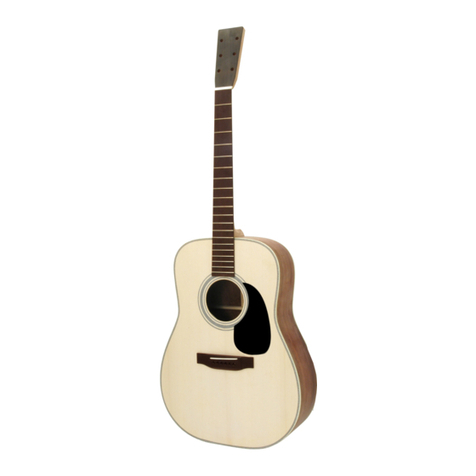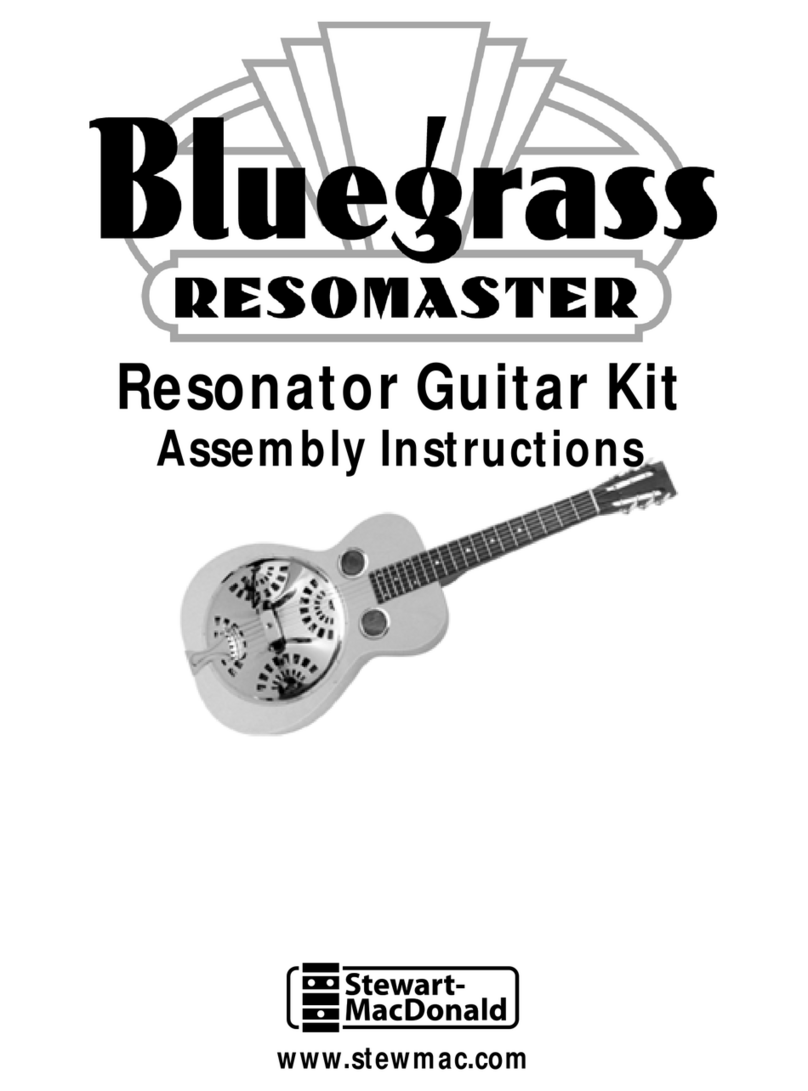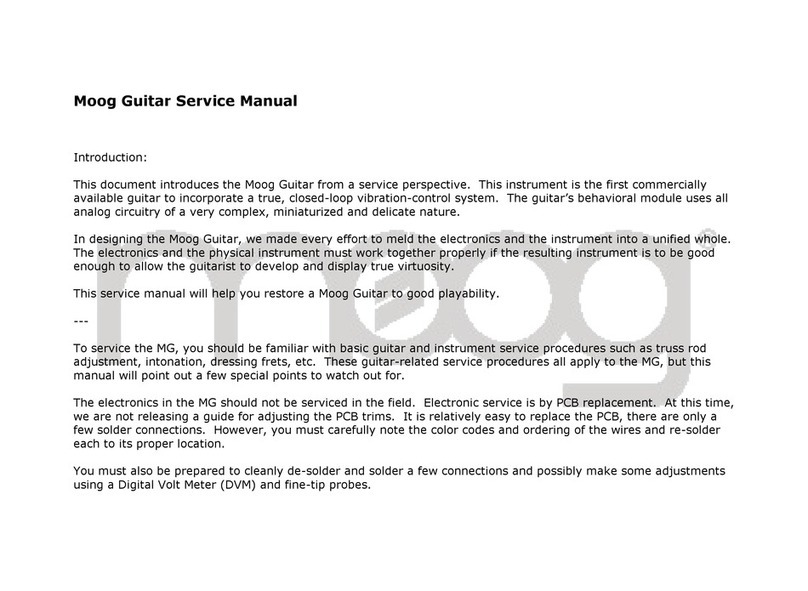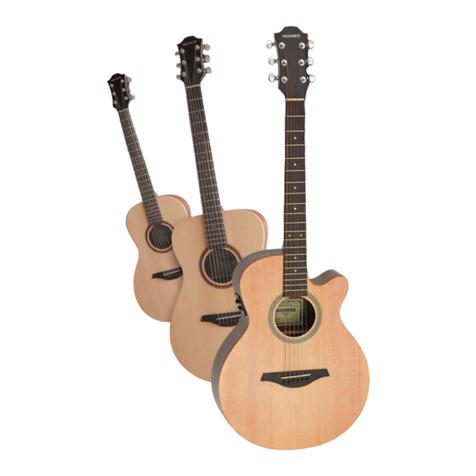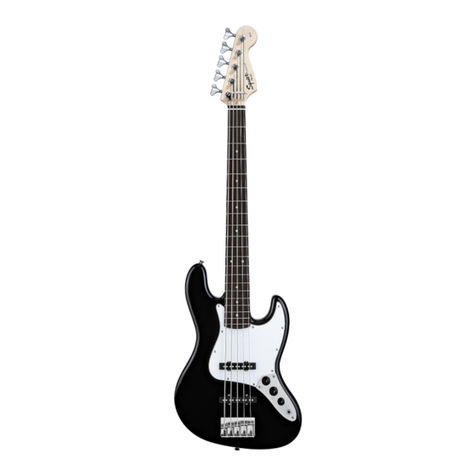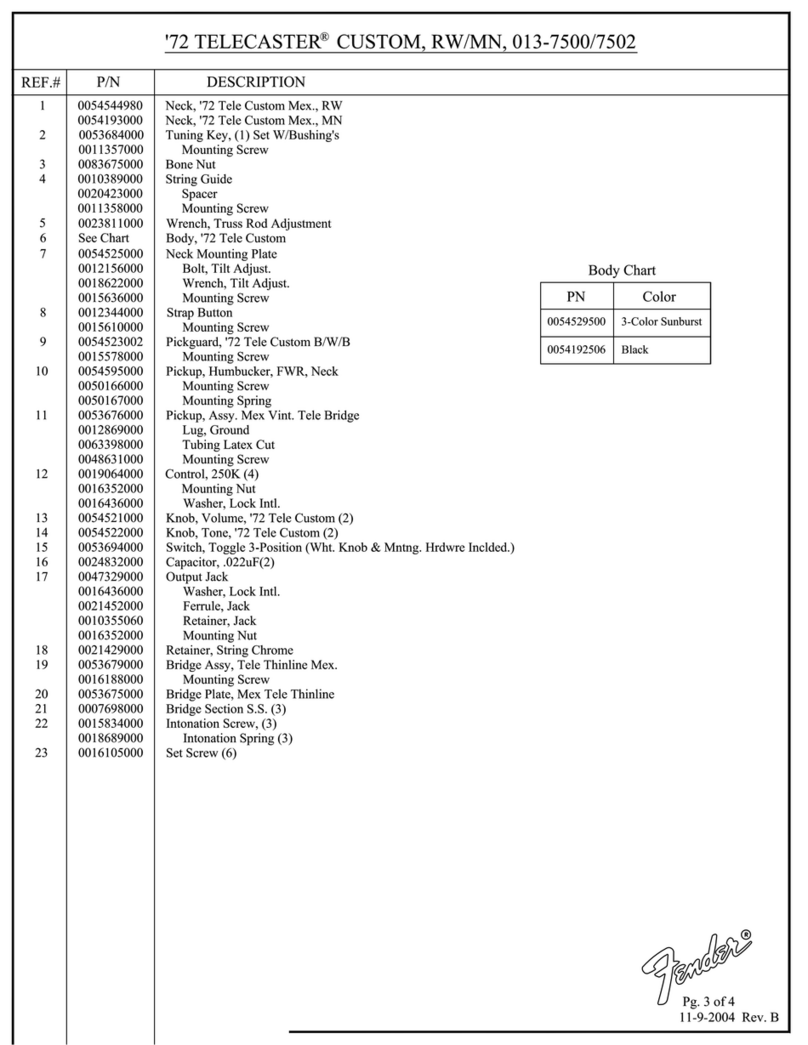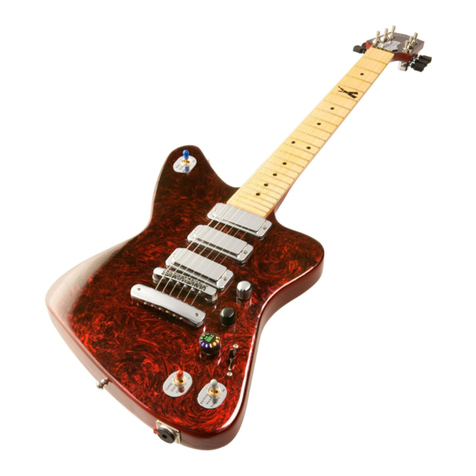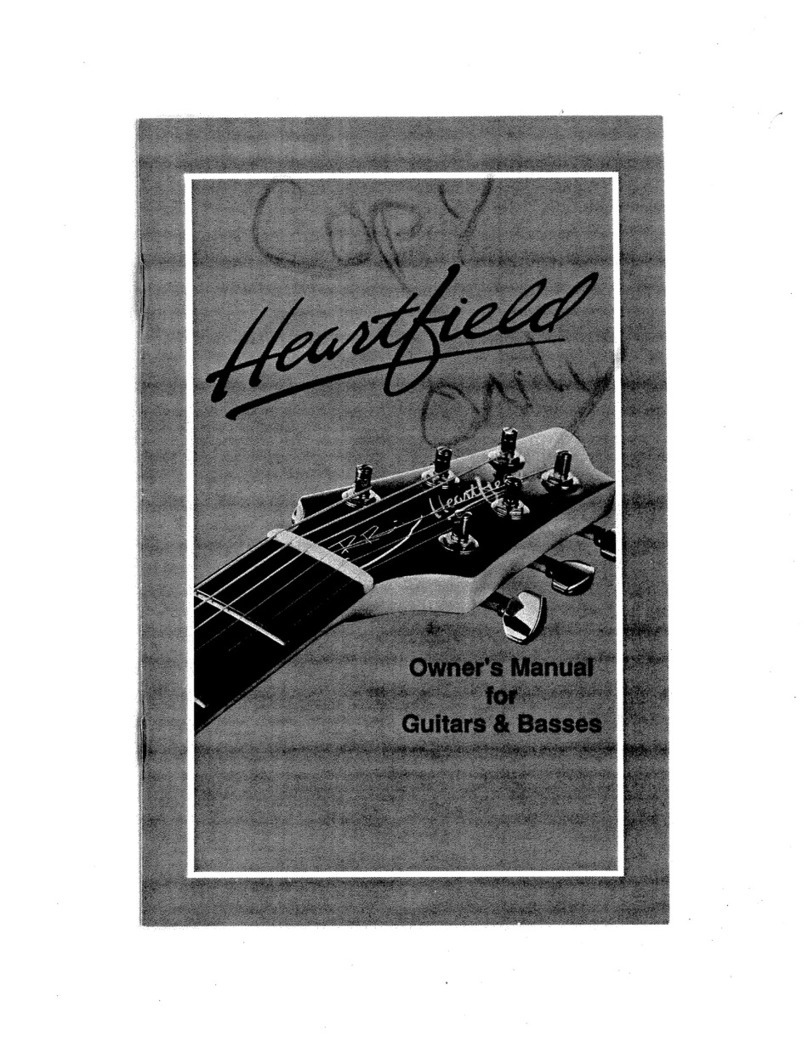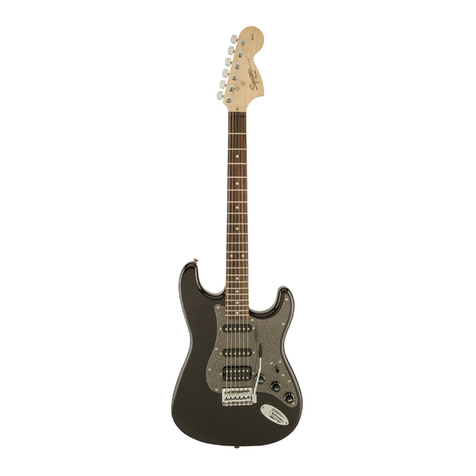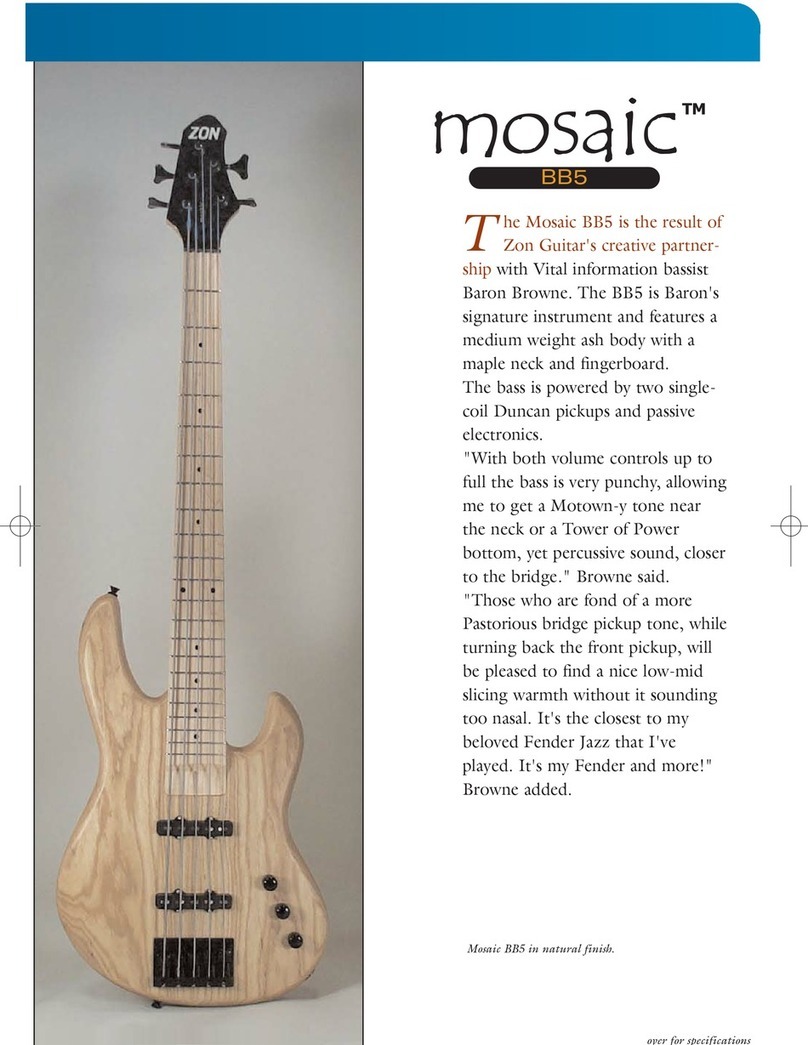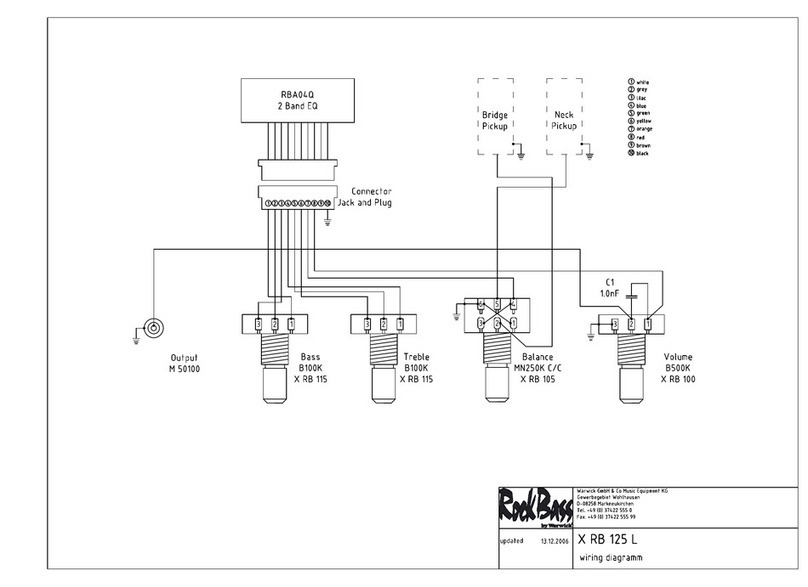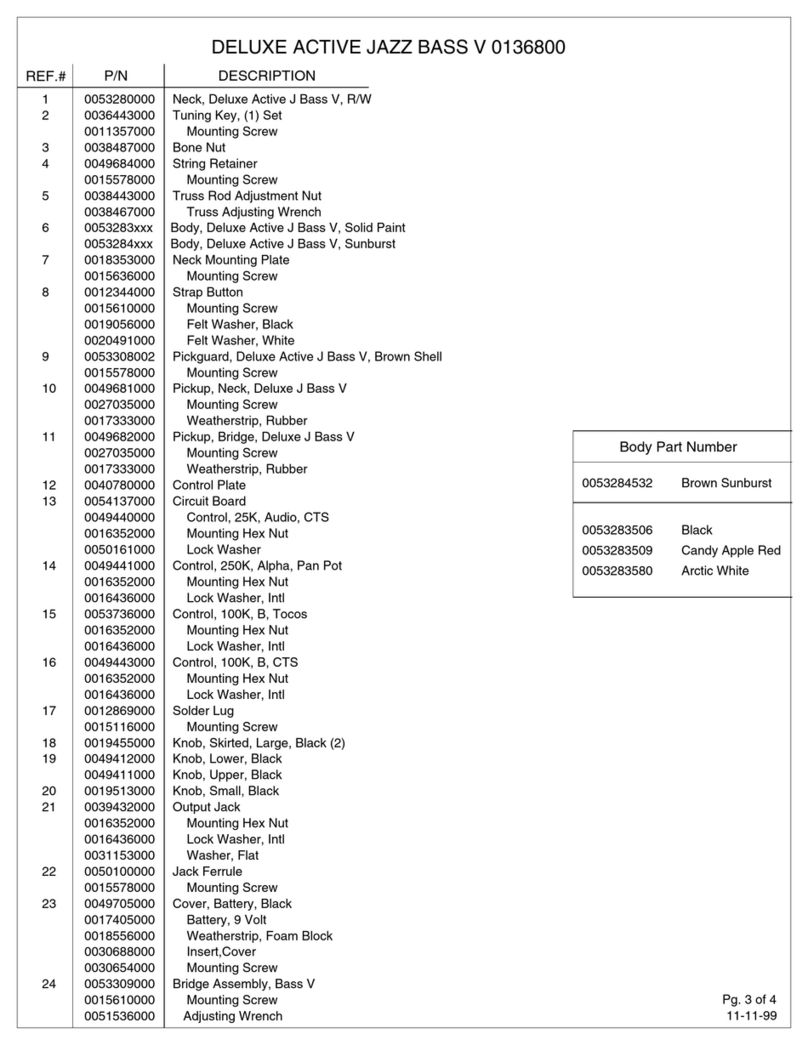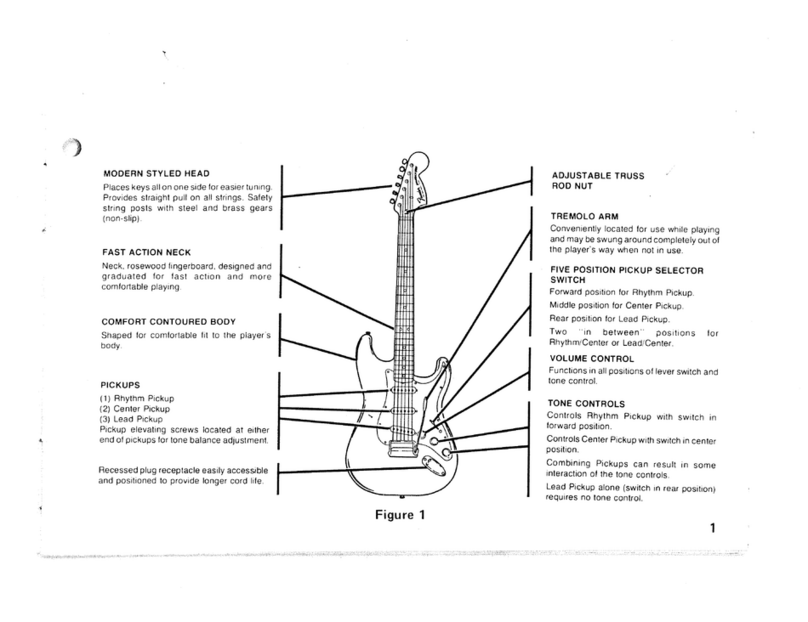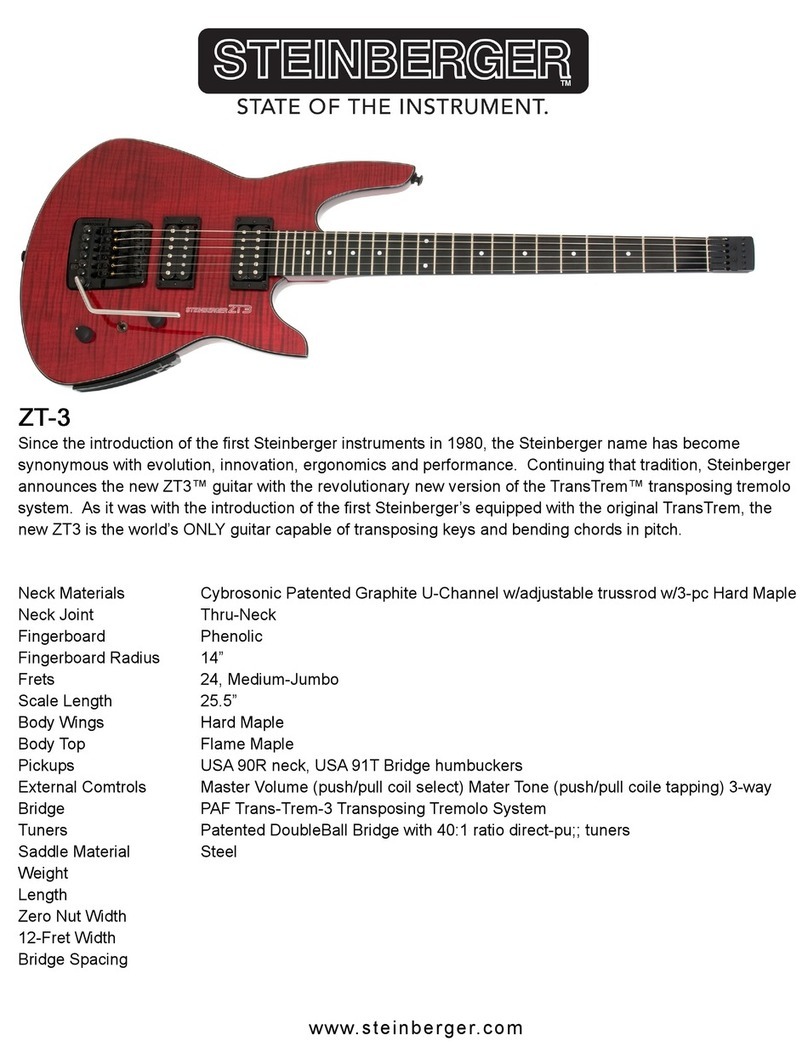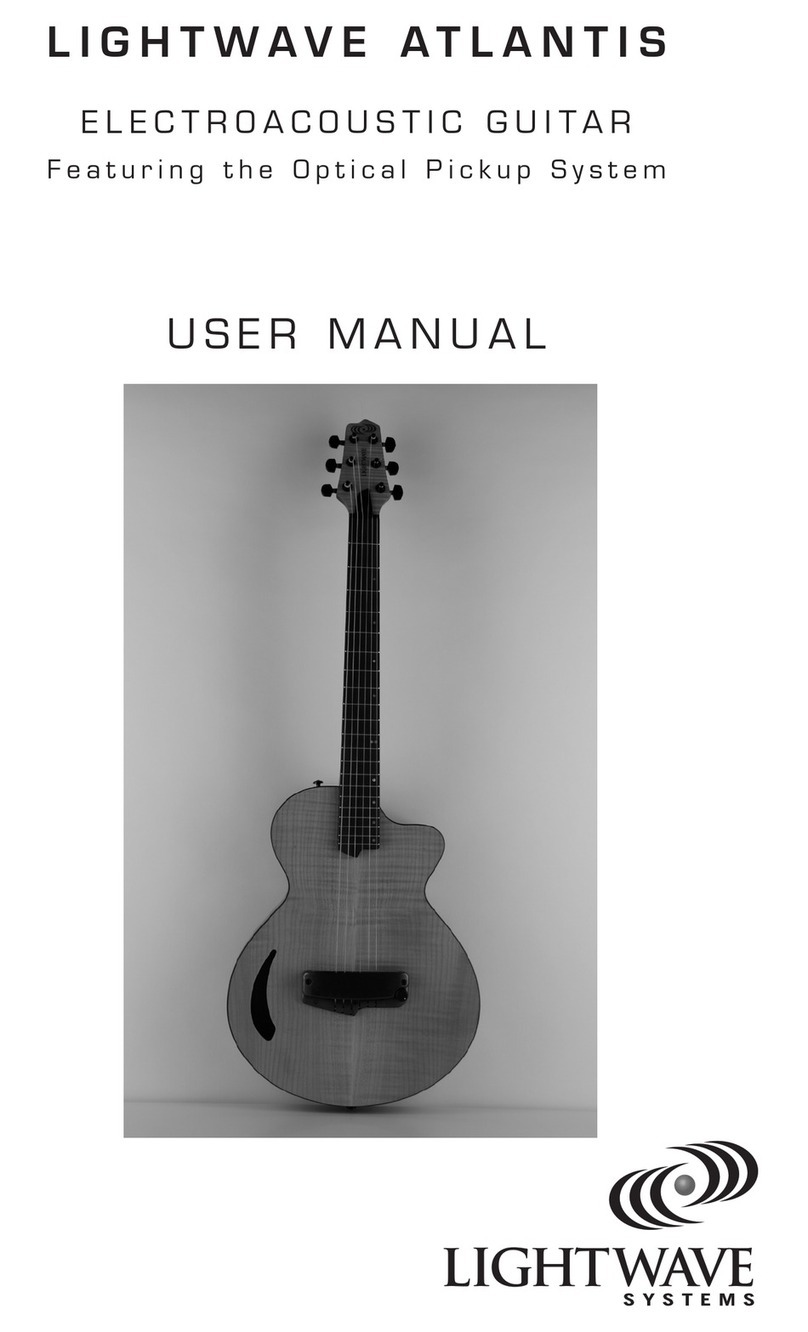Stewart MacDonald 5297 User manual

Triple-O
Acoustic Guitar Kit
#5297 Assembly Instructions
www.stewmac.com


Getting started
Welcome to guitar building! ....................2
Recommended tools and supplies ...............2
Kit parts list .....................................3
Side Assembly
Assembling the sides ...........................4
Making a body mold ............................5
Installing kerfed linings .........................6
Squaring the neck block and tailblock ...........6
Leveling the kerfed linings ......................7
Soundboard bracing and fitting
Installing the soundhole rosette .................8
Shaping the X-braces............................8
Installing the soundboard bracing ..............8
Bridge and shoulder brace clamping cauls .......10
Fitting the soundboard to the sides .............10
Opening the dovetail joint ......................11
Installing the soundboard .......................12
Back bracing and fitting
Installing the back bracing ......................13
Fitting the back to the sides .....................13
Installing the side reinforcing strips .............14
Installing the back ..............................14
Routing and binding
Trimming the top and back overhang ...........15
Routing for the plastic body bindings ...........15
Shaping the heel cap and end trim ..............17
Installing the end trim ..........................17
Installing the bindings ..........................17
Fit and fill the truss rod channel
Fitting the truss rod .............................18
Fill the channel..................................18
Peghead shaping and drilling
Peghead overlay ................................19
Shape the peghead .............................19
Making a fretboard
Trimming the fretboard .........................20
Inlaying the fretboard ...........................20
Installing the fretboard side dots ................21
Installing the frets ..............................21
Installing the fretboard .........................22
Neck shaping and fitting
Shaping the neck ...............................23
Installing the nut ...............................24
Fitting the heel cap .............................24
Understanding the neck joint ...................24
The neck heel sets the neck angle ...............25
Fitting the neck to the body .....................25
Neck adjustment: side-to-side ...................26
Neck adjustment: tilt the neck back .............26
Neck adjustment: tilt the neck up ...............27
Tightening the dovetail joint ....................27
Installing the last frets ..........................27
Finishing
Introduction to finishing and materials ..........28
Sanding the body ..............................28
Filling the fret ends .............................29
Sanding the neck ...............................29
Spray handles and hangers .....................29
Masking the neck and body .....................29
Staining ........................................30
Applying a washcoat to seal the wood ..........30
Filling the wood grain pores ....................30
Lacquer spraying schedule ......................30
Sanding and rubbing-out the finish .............31
Final assembly and setup
Prepare for neck installation ....................32
Install the neck .................................32
Prepare for bridge installation ...................33
Installing the bridge ............................34
Fitting the bridge pins...........................34
Fitting the bridge saddle ........................34
Installing the tuning machines...................35
Seating the strings ..............................35
Understanding neck relief ......................35
Adjusting string action: nut slots & saddle height 36
Leveling the frets ...............................37
Installing the endpin ............................37
CONGRATULATIONS! ...........................37
Table of contents

stewmac.com
Small cam clamps (at least 2) #3724
Large cam clamp (2) #3725
Spool clamps (24) #3715
Clothes pins (50)
Medium bar-style clamp (2) #3714
X-Acto knife
Small carpenter’s square
Feeler gauges #1811
Supplies
3/4" plywood workboard 24" x 20"
Titebond glue #0620
Weld-On Cement #1975
Super Glue (#0010 thin and #0020 medium)
Double-stick tape #1689
Low tack protective tape #1682
Masking/binding tape (high tack) #0677
Rubber binding bands #1256 (option to using binding tape)
Sandpaper (80, 100, 150 and 220-grit)
Wax paper
White pencil
Felt-tip marker
Capo #4571
Clean cotton glove
Finishing materials (for aerosol nitrocellulose lacquer finish)
Guitar Finishing Step-By-Step book #5095
Fre-Cut® sandpaper 150, 220, 320, 600, 800, and 1200-grit at least 2 sheets
of each grit (included in Finishing Paper Sampler Package #5562)
ColorTone Concentrated Liquid Stain (tobacco brown #5034, red
mahogany #5032)
Grain filler
ColorTone Clear Gloss aerosol nitrocellulose lacquer (6) #3881
Blush Eraser #1313
Stewart-MacDonald Polishing Compound medium #1845 and fine #1846
Stewart-MacDonald Swirl Remover #1847 (optional)
Foam Polishing Pads (2 or 3) #3414 and electric hand drill
Naphtha solvent #0775
Paint stripper
Masking supplies: brown paper, masking tape, cardboard and
rubber balloon (or newspaper) for soundhole
The following tools and supplies are recommended to as-
semble your kit. Though all of these tools aren’t necessary
to build your kit, they make many assembly steps easier
and more professional. Where applicable, item numbers for
ordering from Stewart-MacDonald are included.
For binding installation, you have a couple of different
options to choose from depending on the tools you already
own. If you plan on using a laminate trimmer or router for
binding channels, we suggest our Binding Router Bit (#1298-
B) and bearings (#1298-060, 1298-100). It is our preferred
method. If you plan on routing your binding channels with
a Dremel tool, our Precision Router Set (#5263) ships with
everything you will need.
Tools
Electric hand drill
Coping saw
Center punch or awl
Glue brushes #4167
6" Steel rule #4894
1/2" Chisel #1623
File set #0842
Small rasp #4154
Fret Leveler #0862
Dressing stick #1939
Fret cutter #0619
Deadblow fret hammer #1296
18" Straightedge #3850
.020" gauged saw #3572
Scraper blade #0654
4mm Allen wrench #6113
Nut-slotting files: 0.016" width (#0827) and 0.035" width (#0832)
1/4"-diameter bit #4850
Bridge pin reamer #3227
Fret dressing file, medium # 1602
Radius-sanding block, 16" radius #0413
Recommended tools and supplies
daily to neutralize excessive warping. Depending upon your
location and the season, you may need to humidify or dehu-
midify your shop to maintain the desired relative humidity.
It is advisable to purchase a thermometer/hygrometer to
monitor your shop’s climate. If you’re unable to control the
relative humidity in your shop, we discourage building the
guitar during the transition from dry to wet seasons, or vise
versa. The radical change in humidity can cause warping,
splitting or other serious complications.
Throughout the assembly of the kit you’ll need a flat
workboard of 3/4" plywood approximately 24" long and 20"
wide, big enough for your guitar’s body assembly.
Be safe when using tools, glues, and chemicals. Wear
eye protection and gloves when needed, and always
use proper ventilation.
You are about to build a truly great guitar! We designed this
kit with the small shop builder and a modest tool budget in
mind, with the exception of a few specialty guitar making
tools.
Please read these instructions before building your guitar.
Some photos in these instructions use a Dreadnought gui-
tar as a model, though the technique is the same for either
Dreadnought or Triple-O guitar. Options include dovetail or
bolt-on neck and back and side woods of either mahogany
or rosewood.
It’s very important to acclimate the wood to your building
environment. The ideal building environment temperature is
70-80° Fahrenheit (21-26° Celsius), with a controlled relative
humidity of 45-50%. The kit wood should be laid out and al-
lowed to “equalize” for one week in your shop. Flip the wood
Getting started
Welcome to guitar building!
Stewart-MacDonald
has easy-to-order sets
of tools that kit builders
find most useful, search
“acoustic kit tools” at
stewmac.com
2

stewmac.com
1Bent sides, rosewood or
mahogany, depending on
your kit (2)
2Kerfed lining (8)
3Fretboard
4Mahogany neck, dovetail
or bolt-on
5Rosewood peghead overlay
6Maple bridge plate stock
7Neck block, dovetail or
bolt-on
8 Tailblock
9 Thick binding, black or white
10 Thin binding, white and black
11 Sitka spruce soundboard
12 Bridge
13
Back, rosewood or mahogany
14 Building an Acoustic Guitar Kit
DVD
Kit parts list
15 Blueprint, body and bracing
patterns
16 Heel cap and end trim
17 Herringbone rosette (3 pieces)
18 Top brace set, plus 2 unshaped
X-braces
19 Fretwire (3)
20 Bone saddle blank
21 Bone nut blank
22 Diamond shaped inlays,
small (4), and large (3)
23 White side dot material
24 Back brace set (9 pieces)
25 Endpin
26 Bridge pins (6)
27 Hot Rod truss rod
28 Reinforcement strips (3)
29 Shim stock (not in bolt-on kit)
Not pictured: this assembly
instructions book, cardboard
body mold (2), scrap wood,
and large rubber band
12
3
4
5
6
7
8
9
10
11
12
13
16
14
15
17
18
19 20
21
22
23
24
25 26
27
28
29
3
Table of contents
Other Stewart MacDonald Guitar manuals
